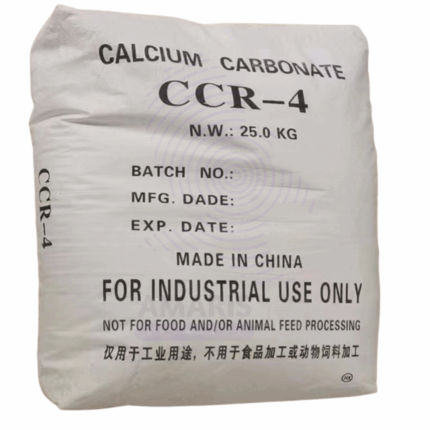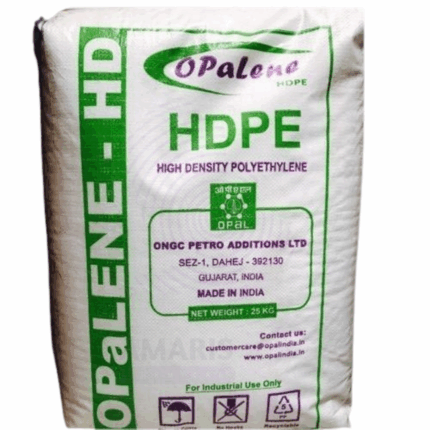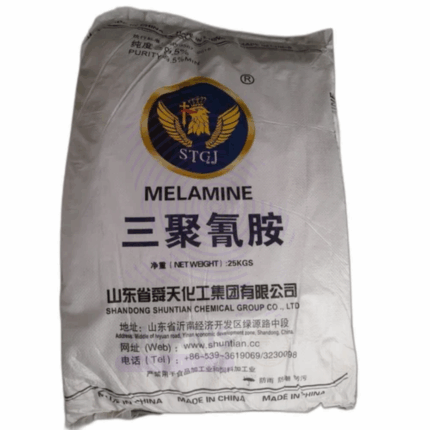“Calcium Carbonate Heavy” has been added to your cart. View cart
Filler WTD
Whatsapp Order
Filler WTD is a versatile, finely processed powdered filler primarily used in a wide range of industrial applications including paints, coatings, plastics, adhesives, sealants, rubber compounds, and construction materials. It is engineered to improve product performance by enhancing mechanical properties, increasing volume, reducing cost, and improving processing characteristics. Filler WTD typically exhibits excellent dispersibility, consistent particle size distribution, and good compatibility with various resin systems and binders. Its primary role is to act as an inert extender or reinforcing agent, providing bulk and stability while maintaining or enhancing the physical and chemical properties of the final formulation.
Description
Table of Contents
Toggle
Filler WTD
Primary Uses
- Paints and Coatings
- Serves as an extender pigment to increase volume and reduce formulation costs without compromising coating quality.
- Enhances opacity, brightness, and surface smoothness of paints and varnishes.
- Improves mechanical properties such as scratch resistance, durability, and weathering performance.
- Aids in controlling viscosity and rheology for better application and flow.
- Plastics and Polymers
- Used as a reinforcing filler in thermoplastics and thermosets to improve stiffness, dimensional stability, and impact resistance.
- Helps reduce shrinkage and warpage during molding processes.
- Contributes to improved processing efficiency by modifying melt flow and extrusion characteristics.
- Acts as a cost-effective volume extender to reduce raw material expenses.
- Adhesives and Sealants
- Enhances the mechanical strength and durability of adhesive bonds and sealant compounds.
- Controls shrinkage and curing characteristics.
- Improves workability and consistency of formulations.
- Rubber Compounds
- Used as a reinforcing or processing filler in natural and synthetic rubber products to improve tensile strength, abrasion resistance, and elasticity.
- Assists in controlling hardness and resilience of rubber goods.
- Construction Materials
- Incorporated into cement, mortar, plaster, and putty formulations to improve bulk, reduce cracking, and enhance workability.
- Improves texture and finish quality of architectural coatings and plasters.
Secondary Uses
- Paper Industry
- Utilized as a filler to improve paper opacity, brightness, and printability.
- Enhances surface smoothness and ink receptivity.
- Ceramics and Glass
- Acts as a functional filler in ceramic bodies to improve firing behavior and mechanical properties.
- Used in glass formulations to modify melting points and optical properties.
- Cosmetics
- Occasionally employed in personal care formulations (e.g., powders) as a texturizing and bulking agent, though this is less common depending on composition.
PRODUCT KEY FEATURES
1. Basic Identification Attributes
- Chemical Name: Variable depending on composition (commonly calcium carbonate, talc, silica, or other mineral fillers)
- Common/Trade Name: Filler WTD
- CAS Number: Depends on primary mineral content (e.g., calcium carbonate CAS 471-34-1)
- HS Code: Varies depending on material but generally under 2508, 2529, or related chapters
- Molecular Formula: Variable depending on specific filler chemistry
2. Physical & Chemical Properties
- Physical State: Fine powder
- Color: Off-white to white, depending on formulation
- Odor: Odorless
- Particle Size: Typically micron-sized, uniform distribution for optimal dispersibility
- Density: Varies (usually 2.5–2.8 g/cm³ for mineral fillers)
- Solubility: Insoluble in water and organic solvents
- pH: Neutral to slightly alkaline depending on composition
- Stability: Chemically inert and stable under normal processing and storage conditions
3. Safety & Hazard Attributes
- Hazard Class (GHS): Generally classified as non-hazardous inert material; dust may cause respiratory irritation
- Toxicity: Low toxicity; prolonged inhalation of dust may cause respiratory discomfort
- Exposure Limits: Follow local occupational exposure limits for nuisance dust (typically OSHA PEL = 15 mg/m³ total dust, 5 mg/m³ respirable dust)
4. Storage & Handling Attributes
- Storage Conditions: Store in dry, cool, and well-ventilated areas; avoid moisture to prevent caking
- Container Type: Bags or bulk containers designed to minimize moisture ingress
- Shelf Life: Indefinite if stored properly in sealed, dry conditions
- Handling Precautions: Use dust control measures; wear PPE during handling to avoid dust inhalation
5. Regulatory & Compliance Attributes
- Complies with relevant industry standards for fillers in paints, plastics, and construction materials
- Registered and approved for use in applicable industries according to regional regulatory frameworks
6. Environmental & Health Impact
- Biodegradability: Inert mineral fillers do not biodegrade but are environmentally stable
- Ecotoxicity: Generally low environmental impact; avoid uncontrolled release into waterways
- Bioaccumulation: Not applicable
- Carcinogenicity/Mutagenicity: Not carcinogenic; inert mineral nature
SAFETY HANDLING PRECAUTIONS
- Safety Handling Precautions
- PPE Required: Dust mask or respirator, safety goggles, gloves
- Handling Guidelines: Minimize dust generation; use local exhaust ventilation where possible
- Storage Measures: Keep containers sealed and dry
- Hygiene Practices: Wash hands after handling; avoid eating/drinking in handling areas
- First Aid Measures
- Inhalation: Move to fresh air; seek medical advice if respiratory irritation occurs
- Skin Contact: Wash with soap and water; seek medical attention if irritation develops
- Eye Contact: Rinse thoroughly with water for at least 15 minutes; consult a physician if irritation persists
- Ingestion: Rinse mouth; seek medical advice if large quantities swallowed
- Firefighting Measures
- Fire Hazards: Non-flammable
- Extinguishing Media: Use appropriate media for surrounding fire
- Special Precautions: None specific to Filler WTD; avoid dust cloud ignition
Related products
Calcium Carbonate Filler
Calcium Carbonate Filler is a high-quality, uncoated ground calcium carbonate (GCC) specially engineered for use as a filler in polyethylene (PE) and other polyolefin resins. This grade of calcium carbonate is designed to enhance the physical and mechanical properties of plastics while providing cost-effective bulk and improved processing. It is a fine, white, odorless powder with excellent brightness, high purity, and uniform particle size distribution. Its use improves stiffness, impact resistance, dimensional stability, and surface finish in polyethylene applications such as films, sheets, pipes, and molded parts.
Domacryl 251 50X
Domacryl is a high-performance acrylic polymer latex designed for use as a binder in water-based coatings, adhesives, sealants, and construction materials. It is a styrene-acrylic copolymer emulsion offering excellent film formation, adhesion, durability, and chemical resistance. Domacryl provides superior mechanical strength and flexibility in formulated products, making it ideal for applications requiring long-lasting protection and enhanced aesthetic qualities. The polymer is supplied as a stable aqueous dispersion with approximately 50% solids content, packed in bulk (190 kg drums) for industrial use.
Eagle Homopolymer 510/50 50%
Eagle Homopolymer 510/50 50% is a high-purity homopolymer solution, typically referring to polyvinyl alcohol (PVA) or a similar water-soluble polymer supplied at 50% concentration. This product offers excellent film-forming, adhesive, thickening, and stabilizing properties, making it versatile in applications such as adhesives, textile sizing, paper coating, and packaging. The homopolymer’s controlled molecular weight and solution viscosity provide consistent performance and ease of handling. The 50% aqueous solution form facilitates easy mixing and incorporation into various formulations.
Eagle VAM VEO (VV50/55)
Eagle VAM VEO VV50/55 is a water-based vinyl‑acetate–ethylene (VAM‑VEO) copolymer emulsion, formulated at 55% active solids. It presents as a milky-white, medium-viscosity liquid with a mild emulsion odor. This copolymer combines excellent film formation, adhesion, flexibility, and toughness, tailored for use in coatings, adhesives, sealants, and functional binders across multiple industries.
HDPE Film F52H04 Opalene
HDPE Film F52H04 Opalene is a high-density polyethylene film grade resin specially engineered for producing thin, flexible, and high-strength films. It is designed for blown film extrusion processes, delivering excellent mechanical properties, superior clarity (opal/opalene finish), and consistent gauge control. This resin offers high tensile strength, good puncture resistance, and excellent moisture barrier properties, making it ideal for packaging applications requiring durability and flexibility. Its balanced processing characteristics enable fast extrusion rates and uniform film thickness.
Melamine
Melamine is an organic compound widely used as a raw material in the production of melamine-formaldehyde resins, laminates, adhesives, coatings, and flame retardants. It offers excellent hardness, thermal stability, and chemical resistance. Supplied in 25kg bags, melamine is a white crystalline powder with high nitrogen content, making it a valuable additive in plastics, construction materials, and surface treatments.
PP Raffia 1003
PP Raffia 1003 is a polypropylene homopolymer resin commonly used for manufacturing raffia fibers and woven sacks. It offers high tensile strength, excellent dimensional stability, and good resistance to chemicals and environmental stress. This grade is ideal for producing durable woven fabrics used in packaging, agriculture, and construction applications.
Styrene Acrylic
Styrene Acrylic is a copolymer emulsion combining styrene and acrylic monomers, widely used as a versatile binder in coatings, adhesives, and construction materials. It offers excellent film-forming properties, adhesion, water resistance, and durability. This product enhances the performance and longevity of paints, sealants, textiles, and paper coatings, with flexibility for both indoor and outdoor applications. Styrene Acrylic emulsions are designed to meet stringent industrial and environmental standards.


 Preservatives(food)
Preservatives(food) Flavor Enhancers
Flavor Enhancers Acidulants
Acidulants Sweeteners
Sweeteners Antioxidants
Antioxidants Colorants(food)
Colorants(food) Nutraceutical Ingredients (food)
Nutraceutical Ingredients (food) Nutrient Supplements
Nutrient Supplements Emulsifiers
Emulsifiers
 Collectors
Collectors Dust Suppressants
Dust Suppressants Explosives and Blasting Agents
Explosives and Blasting Agents Flocculants and Coagulants
Flocculants and Coagulants Frothers
Frothers Leaching Agents
Leaching Agents pH Modifiers
pH Modifiers Precious Metal Extraction Agents
Precious Metal Extraction Agents
 Antioxidants(plastic)
Antioxidants(plastic) Colorants (Pigments, Dyes)
Colorants (Pigments, Dyes) Fillers and Reinforcements
Fillers and Reinforcements Flame Retardants
Flame Retardants Monomers
Monomers Plasticizers
Plasticizers Polymerization Initiators
Polymerization Initiators Stabilizers (UV, Heat)
Stabilizers (UV, Heat)
 Antifoaming Agents
Antifoaming Agents Chelating Agents
Chelating Agents Coagulants and Flocculants
Coagulants and Flocculants Corrosion Inhibitors
Corrosion Inhibitors Disinfectants and Biocides
Disinfectants and Biocides Oxidizing Agents
Oxidizing Agents pH Adjusters
pH Adjusters Scale Inhibitors( water)
Scale Inhibitors( water)
 Antioxidants(cosmetic)
Antioxidants(cosmetic) Emollients
Emollients Fragrances and Essential Oils
Fragrances and Essential Oils Humectants
Humectants Preservatives
Preservatives Surfactants(cosmetic)
Surfactants(cosmetic) Thickeners
Thickeners UV Filters
UV Filters
 Fertilizers
Fertilizers Soil Conditioners
Soil Conditioners Plant Growth Regulators
Plant Growth Regulators Animal Feed Additives
Animal Feed Additives Biostimulants
Biostimulants Pesticides (Herbicides, Insecticides, Fungicides)
Pesticides (Herbicides, Insecticides, Fungicides)
 Active Pharmaceutical Ingredients (APIs)
Active Pharmaceutical Ingredients (APIs) Excipients
Excipients Solvents(pharmaceutical)
Solvents(pharmaceutical) Antibiotics
Antibiotics Antiseptics and Disinfectants
Antiseptics and Disinfectants Vaccine Adjuvants
Vaccine Adjuvants Nutraceutical Ingredients (pharmaceutical)
Nutraceutical Ingredients (pharmaceutical) Analgesics & Antipyretics
Analgesics & Antipyretics
 Analytical Reagents
Analytical Reagents Solvents(lab)
Solvents(lab) Chromatography Chemicals
Chromatography Chemicals Spectroscopy Reagents
Spectroscopy Reagents microbiology-and-cell-culture-reagents
microbiology-and-cell-culture-reagents Molecular Biology Reagents
Molecular Biology Reagents Biochemical Reagents
Biochemical Reagents Inorganic and Organic Standards
Inorganic and Organic Standards Laboratory Safety Chemicals
Laboratory Safety Chemicals Specialty Laboratory Chemicals(Special Laboratory Equipment)
Specialty Laboratory Chemicals(Special Laboratory Equipment)
 Demulsifiers
Demulsifiers Hydraulic Fracturing Fluids
Hydraulic Fracturing Fluids Scale Inhibitors(oil)
Scale Inhibitors(oil) Surfactants(oil)
Surfactants(oil) Drilling Fluids
Drilling Fluids
 Dyes and Pigments
Dyes and Pigments Bleaching Agents
Bleaching Agents Softening Agents
Softening Agents Finishing Agents
Finishing Agents Antistatic Agents
Antistatic Agents
 Admixtures
Admixtures Waterproofing Agents
Waterproofing Agents Sealants and Adhesives
Sealants and Adhesives Curing Compounds
Curing Compounds Concrete Repair Chemicals
Concrete Repair Chemicals Anti-Corrosion Coatings
Anti-Corrosion Coatings
 Surfactants(cleaning)
Surfactants(cleaning) Builders
Builders Enzymes
Enzymes Solvents (Cleaning)
Solvents (Cleaning) Fragrances
Fragrances
 Electronic Chemicals
Electronic Chemicals Catalysts
Catalysts Lubricants
Lubricants Photographic Chemicals
Photographic Chemicals Refrigerants
Refrigerants Automotive chemicals
Automotive chemicals Pyrotechnic Chemicals
Pyrotechnic Chemicals
 Biodegradable Surfactants
Biodegradable Surfactants Bio-based Solvents
Bio-based Solvents Renewable Polymers
Renewable Polymers Carbon Capture Chemicals
Carbon Capture Chemicals Wastewater Treatment Chemicals
Wastewater Treatment Chemicals
 Pigments
Pigments Solvents(paint)
Solvents(paint) Specialty Coatings
Specialty Coatings Binders/Resins
Binders/Resins Additives
Additives Driers
Driers Anti-Corrosion Agents
Anti-Corrosion Agents Functional Coatings
Functional Coatings Application-Specific Coatings
Application-Specific Coatings
 Fresh Herbs
Fresh Herbs Ground Spices
Ground Spices Whole Spices
Whole Spices Spice Blends
Spice Blends Dried Herbs
Dried Herbs
 Leavening Agents
Leavening Agents Dough Conditioners
Dough Conditioners Flour Treatments
Flour Treatments Fat Replacers
Fat Replacers Decoratives
Decoratives Preservatives(baking)
Preservatives(baking)
 Plasticizers & Softeners
Plasticizers & Softeners Reinforcing Agents
Reinforcing Agents Adhesion Promoters
Adhesion Promoters Vulcanizing Agents
Vulcanizing Agents Antidegradants
Antidegradants Blowing Agents
Blowing Agents Fillers & Extenders
Fillers & Extenders Accelerators & Retarders
Accelerators & Retarders






















